 In spring of 2015, we previewed a tile drafting game called Between Two Cities from Stonemaier Games. Their Kickstarter campaign successfully funded with over 5,000 backers pledging for a copy.
In spring of 2015, we previewed a tile drafting game called Between Two Cities from Stonemaier Games. Their Kickstarter campaign successfully funded with over 5,000 backers pledging for a copy.
Months later, the game has finally made its way to our doorsteps (on time I might add) and we were able to give it a go. Designed by Matthew O’Malley (Princess Bride: Battle of Wits) and Ben Rosset (Brewcrafters, Mars Needs Mechanics), Between Two Cities has players drafting tiles for two different cities that will be built concurrently with their neighbors. Does it work? Let’s jump into this tile placement game and find out.
Between Two Cities is a tile drafting and placement game for 1-7 players that takes about 20 minutes to play. Between Two Cities plays well with any amount of players.
Game Overview:
The goal of Between Two Cities is for each player to build two cities of 16 tiles each. You will be working with the players on your left and right to cooperatively build each of your two cities.
After selecting tiles, you will play one into each of your cities, hopefully earning you points in this set collection game. However you can’t just focus on one city, because at the end of the game, you score victory points for only the lower scoring of your two cities.
Game Components:
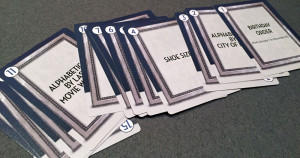
I can honestly say I’ve never been disappointed with the publishing quality of any Stonemaier Games product and Between Two Cities holds true to that. The main components you find in the box are the 108 building tiles, in six different structure types. These are well illustrated by Beth Sobel, a regular artist for Stonemaier products. Each tile also contains information on how it scores, which helps make learning the game an easy task.
In addition to the 108 standard tiles, the game also comes with 24 duplex tiles. These are essentially two standard tiles connected, either vertically or horizontally, that will be used in the second round of game play.
Other than tiles, the game comes with a number of (depending on which edition of the game you have) city landmark tokens to be used for scoring. While these look great, they are mostly eye candy and really only used to make scoring easier. So don’t fret if you get the basic version that only has a handful of them. A scoreboard, reference cards, and single player “automas cards” help round out this solidly published game. You’d be hard pressed to find any complaints with the production quality of Between Two Cities, especially for its low price point.
How to Play:
Jumping into the game play of Between Two Cities is relatively easy. The thing that will take longest will probably be explaining how each tile scores to new players.
To begin, players are seated around the table based on the randomized cards provided (or you can really just sit anywhere if you don’t care that much).
Each pair of players has a city token placed between them, this is where their combined city will be built.
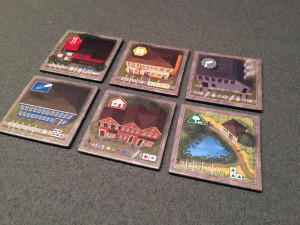
For the first round of game play, each player draws 7 tiles from the stack to form their starting hand. They then secretly choose 2 tiles to play this round, and then place the rest of the unselected tiles above the city to their left, face down.
Once everyone is ready, the tiles are revealed. Players then openly discuss with their neighbors which tile to place in which city, and where. All tiles must be placed adjacent to another tile, and facing the same direction. Tiles also must be placed within the limits of a 4×4 grid.
This process is repeated twice with the 5 other tiles, with the last tile being discarded.
For round two, each player draws three duplex tiles and chooses two to be played. Placement works the same way as round one, the duplex tiles are simply treated as 2 regular tiles “stuck together”.
Round three is identical to round 1, except tiles are passed to the right.
At the end of three rounds, players then proceed to scoring. Each tile is scored in a different way:
The different types of city tiles are:
Shops: Scores points based on how many shops there are in a row or column.
Factories: Scores points based on how many factories you have compared to other cities.
Taverns: Scores points for each set of different taverns (there are 4 different types and you gain the most points by having one of each)
Offices: Score increasing points for how many total office tiles you have; also score bonus points for offices next to taverns.
Parks: Scores points based on how large the park cluster is.
Houses: Score points based on the amount of other buildings in your city (Max of 5 points per house if you have all the other buildings in your city). Lose points if placed next to a factory.
Once all cities are scored, each player’s final score is the LOWER of the score of their two cities. The player with the highest score is the winner.
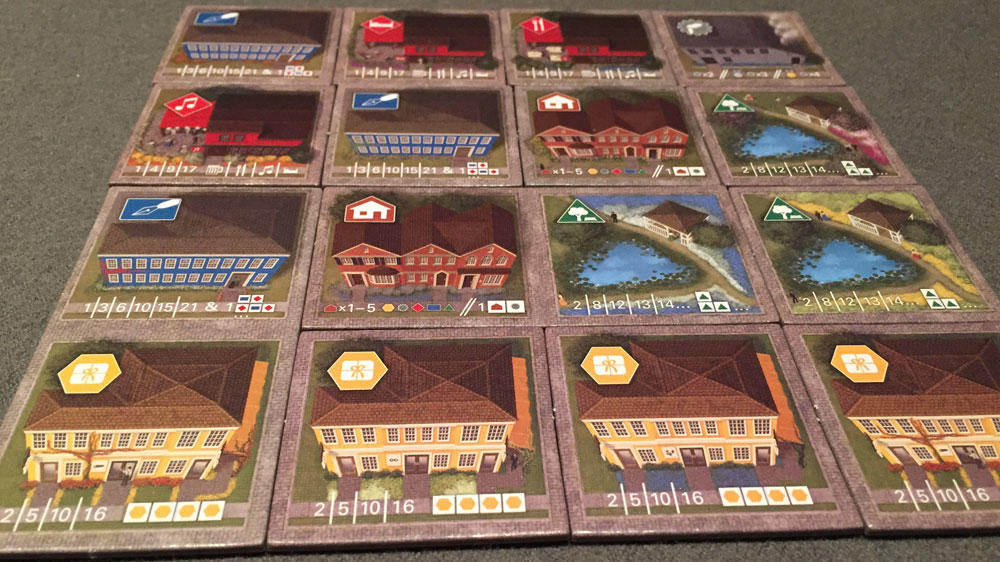
Game Experience:
One of the nice things about Between Two Cities is how easy it is to jump in and start playing. The rules only take minutes to explain, with the bulk of it explaining how the various tiles work. This is also helped by the included player aids and tile design.
Because of the collaborative nature of Between Two Cities, new players can gain the benefit of working with experienced players for the placement of tiles. Usually in drafting games, you need to keep your hand hidden so it’s hard to work with new players and give them advice. With Between Two Cities, while you can’t talk about the tiles you are selecting, you can work with your teammates to makes sure your tile placement is as optimal as possible.
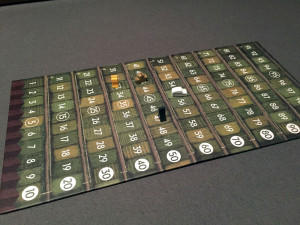
This does have the unfortunately side effect that one really bad player can sink the game for 3 players. If you are playing with a young player, or just one that’s not good at these types of games, there is definitely a possibly of them bringing down their neighbors with them. Fortunately, Between Two Cities is a quick playing game and it’s not hard to get another one going with different seating. In any case, I’d also see this as more of a rarity than the norm.
However it’s this collaboration aspect that makes Between Two Cities stand out in a genre still dominated by 7 Wonders. I really enjoyed working with my partners and the sense of teamwork that comes with it. The scoring also made sure that you can’t just create one supercity while ignoring the other. This little bit of genius help to both really balance out the game play and also make Between Two Cities feel quite unique.
The accessible nature is also one of the things that will make Between Two Cities a fantastic gateway game. 7 Wonders, while still a favorite of mine, isn’t really the best game to introduce someone to the drafting genre anymore. Sushi Go! has filled that niche for me for a while, but I think Between Two Cities does an even better job, both due to its collaborative nature and also the easy to learn set collection mechanics. If you are looking for a game with a bit more interest than Sushi Go!, Between Two Cities absolutely fills that role.
While I’m so far still enjoying Between Two Cities, I think the game could use a bit more depth. Some of the tiles feel a bit too similar with how they score and only one tile has any kind of negative placement (the house) possibility. About half the tiles feel like they score very similarly, with only minor differences. I would really have liked to see a few more hard choices in the game, as it is, there is rarely a move that’s going to be bad for either of your cities.
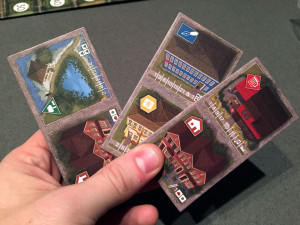
This does have the effect of making the game much more accessible, it also gives it the possibility of wearing out its welcome after a number of plays. This is further influenced by its quick play time. We’ve often played 2-3 games in a row. Part of me worries that after 20 or so games, I might have seen all Between Two Cities has to offer. I would really like to see an expansion someday with more variety in the tiles, especially with more interaction between other cities or negative placement possibilities.
That being said, the second round duplex tiles were a great design decision. It really helps break up the game to give it a bit more interest. I think, had all 3 rounds worked the same way, Between Two Cities would feel repetitive by the end of round 3. More than once I’ve had a curveball thrown at my city with an unexpected duplex tile. And since you can’t rotate tiles around, it really takes a bit of planning to make sure you have plenty of choices for those two tiles.
Final Thoughts:
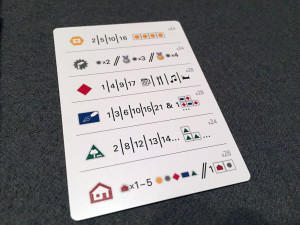
Stonemaier Games did a really good job bringing out their first game not designed by Jamey Stegmaier. It was both well produced (not really a surprise there) and featured some solid game play mechanics. Between Two Cities has already made its way to my gaming table a number of times and is quickly becoming my go to gateway game for the drafting genre.
While I feel like the game could use a bit more variety and depth, so far it hasn’t worn out its welcome. I like the unique final scoring rules and the required player collaboration. It was an interesting solution to the “multiplayer solitaire” effect that is prevalent in many eurogames.
If you are looking for a quick playing, easy to learn drafting and set collection game, give Between Two Cities a look. While not perfect, it’s still a solid, light weight game with some unique aspects.
If you’d like to get a copy of Between Two Cities, you can pick it up for about $29.
Final Score: 3.5 Stars – A good tile drafting game with a unique twist. Makes a great gateway game, but could use a bit more depth to give it increased staying power.
 Hits:
Hits:
• Great production values
• Easy to learn rules
• Unique mechanics, especially for the drafting genre
Misses:
• Tiles could use a bit more variety
• Not many hard choices to make in the game








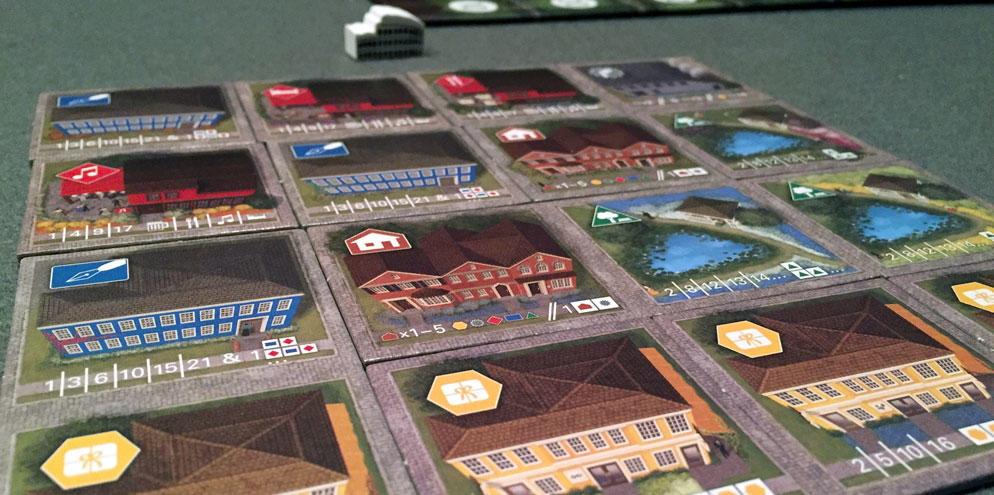

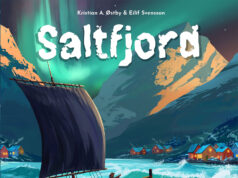













Between Two Cities sound like a really fun board game and a classic that will only grow and improve over time. I hope the Kick stater backers get their moneys worth and it was exactly what they were looking for.
Lets hope also they do come out with future expansions that will improve things and take it to the next level. Nice review I will be keeping and eye out for this title.
I have to agree with most of your review. I’m a Kickstarter backer and I’m happy with the game, but I’m a little concerned about long-term depth. It was great for my in-laws over thanksgiving (Carcassonne’s the most complicated they’ve played), but my wife and I are starting to think it’s a bit too simple. One variation we’ve been trying is for two players, only building one city each, but playing on each other’s cities as well, so you’re trying to help one city and hurt another each turn.